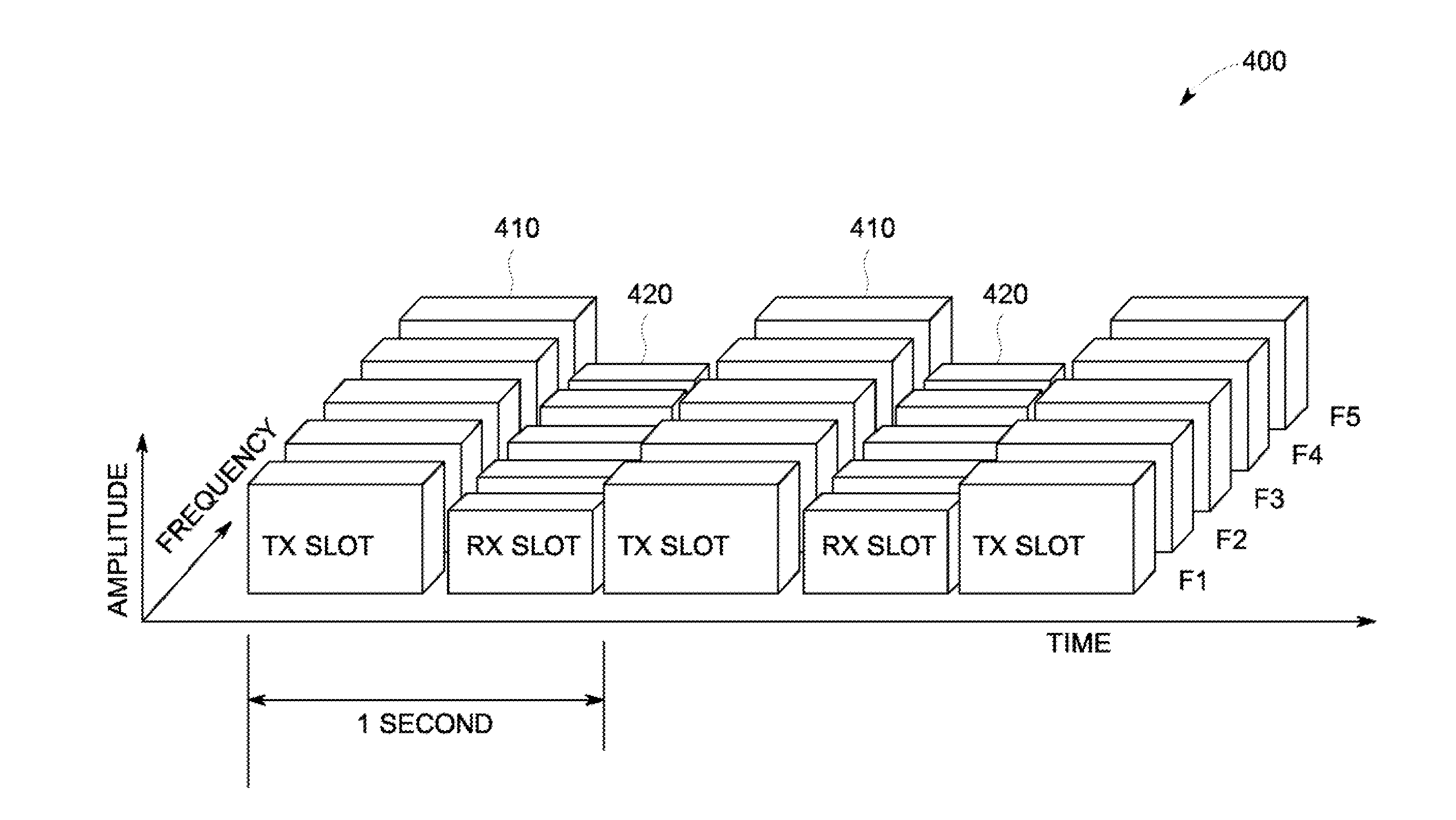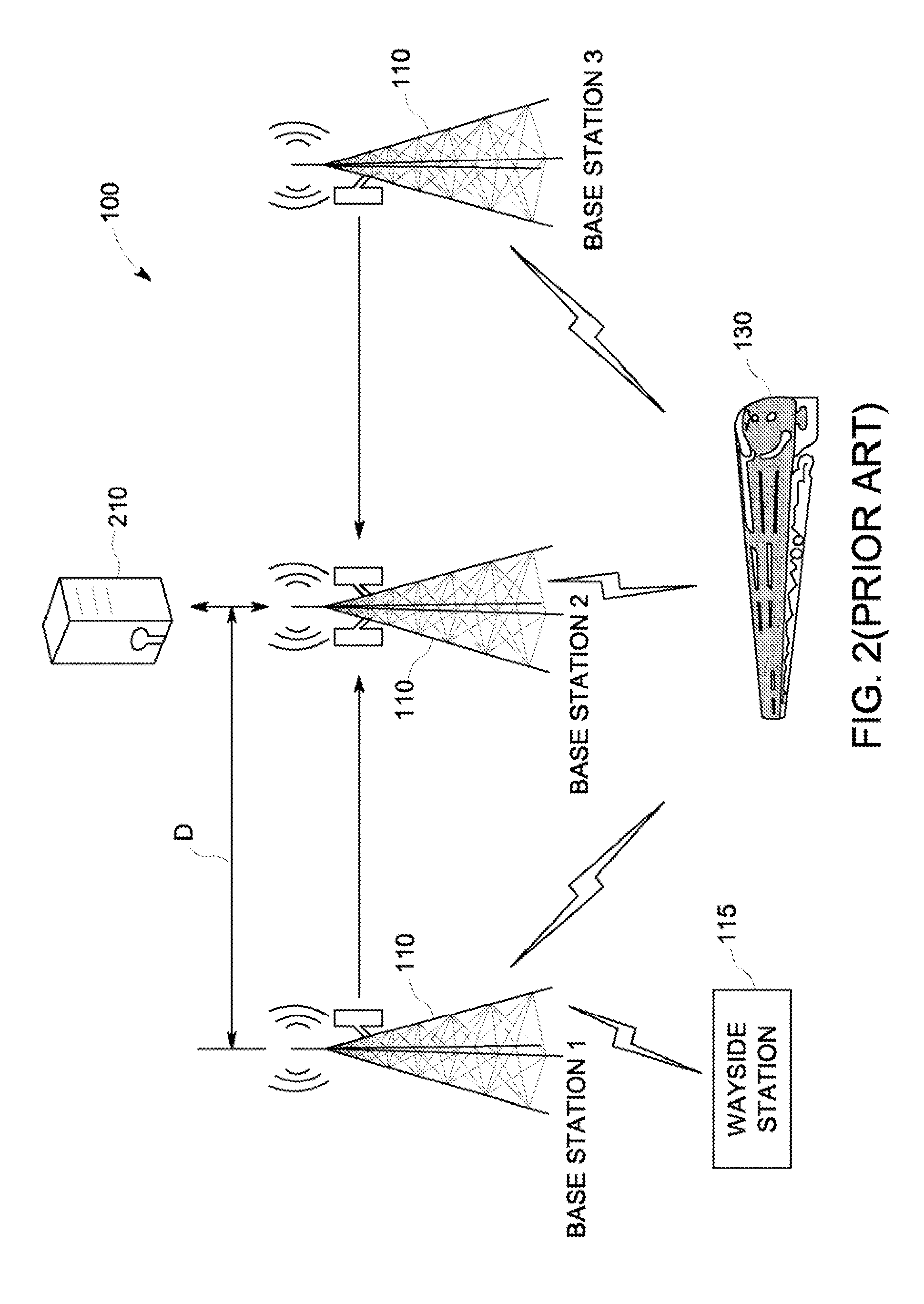Media Access Control Scheme for a Multi-Frequency TDMA Network
a multi-frequency tdma network and access control technology, applied in the field of multi-frequency tdma network access control scheme, can solve the problems of large amount of data, waste of protocol, and failure to have central authority to manage the network or control the deployment of new equipmen
- Summary
- Abstract
- Description
- Claims
- Application Information
AI Technical Summary
Benefits of technology
Problems solved by technology
Method used
Image
Examples
Embodiment Construction
[0025]Traditional wireless communication systems, in a national rail communication network, have assigned a fixed channel or number of channels to each base station and listen to one channel at a time on a single channel radio. This access scheme often leaves capacity unused if there is not a uniform demand on each base station.
[0026]In accordance with the principles of the present invention, a communication system is disclosed that utilizes a plurality of Time Division Duplexed (TDD) / Frequency Division Duplexed (FDD) radio channels that may be dynamically allocated using spatial diversity to create a robust link with exceptional bandwidth and frequency reuse assignable among the elements of the network. In the description of the invention presented herein a plurality of frequency channels represent a finite set of N channels labeled FN. Each base station can simultaneously transmit and receive on M channels, wherein M is a subset of the set of FN (M={N} of the set FN). The set of f...
PUM
 Login to View More
Login to View More Abstract
Description
Claims
Application Information
 Login to View More
Login to View More - R&D
- Intellectual Property
- Life Sciences
- Materials
- Tech Scout
- Unparalleled Data Quality
- Higher Quality Content
- 60% Fewer Hallucinations
Browse by: Latest US Patents, China's latest patents, Technical Efficacy Thesaurus, Application Domain, Technology Topic, Popular Technical Reports.
© 2025 PatSnap. All rights reserved.Legal|Privacy policy|Modern Slavery Act Transparency Statement|Sitemap|About US| Contact US: help@patsnap.com



